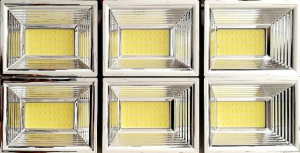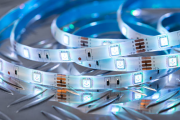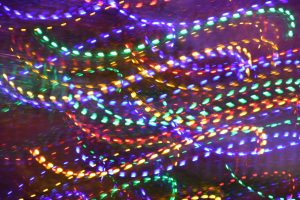How To Diffuse Light From Led
LED (Light Emitting Diode) is a solid-state semiconductor device that can directly convert electricity into light.
LED Chip
The heart of the LED is a semiconductor wafer. One end of the wafer is attached to a bracket, one end is the negative electrode, and the other end is connected to the positive electrode of the power supply, so that the entire chip is encapsulated by epoxy resin. A semiconductor wafer is composed of three parts, one is a P-type semiconductor, in which holes dominate, and the other end is an N-type semiconductor, which is mainly electrons, and there are usually 1 to 5 periodic quantum wells in the middle. When a current is applied to the chip through a wire, electrons and holes are pushed into a vector well, and the electrons and holes recombine in the quantum well, and then energy is emitted in the form of photons. This is the principle of LED light emission. The wavelength of light, which is the color of light, is determined by the material that forms the P-N junction.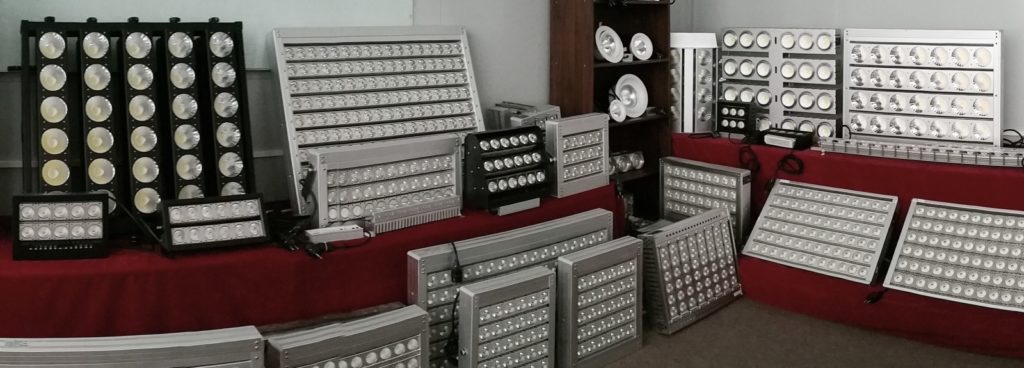
LED lamp beads
A single LED lamp bead can only work under low voltage (about 3V) and low current (about several milliamps), and the light emitted is very weak. Many LED lamp beads need to be connected in series or in parallel. At the same time, a single LED lamp be conductive in one direction. In order to make full use of the positive and negative half-cycle current of AC power, this requires an integrated circuit chip that converts AC 220V power into voltage and current energy. The direct current matched with the LED assembly can meet the requirements of the LED lamp bead assembly, so that it can emit light normally. An electron in an atom has many energy levels. When the electron transitions from a high energy level to a low energy level, the energy of the electron decreases, and the reduced energy is converted into a photon and emitted. A lot of these photons are lasers.
Light emitting principle of LED lights
There are three principles of LED dimmer
1.Pulse Width Modulation (Pulse Width Modulation, PWM for short) Digitize the square wave of the power supply and control the duty cycle of the square wave to achieve the purpose of controlling the current.
2.Constant current power regulation The current can be easily adjusted using analog linear technology.
3.Group control Group multiple LEDs and control them with a simple grouper.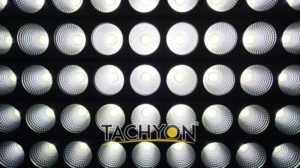
LED Glow process consists of three parts
The heart of an LED is a semiconductor wafer.one end of the LED lamp chip is attached to a bracket, one end is a negative electrode, and the other end is connected to a positive electrode of a power source, so that the entire chip is encapsulated by epoxy resin. A semiconductor wafer consists of two parts, one is a P-type semiconductor, where holes dominate, and the other end is an N-type semiconductor, where electrons are mainly. But when these two semiconductors are connected, a P-N junction is formed between them. When a current is applied to the wafer through a wire, the electrons are pushed to the P region, where the electrons and holes recombine, and then the energy is emitted in the form of photons. This is the principle of LED light emission.
The wavelength of light, which is the color of light, is determined by the material that forms the P-N junction.carrier injection under forward bias, composite radiation and light energy transmission. Tiny semiconductor wafers are encapsulated in a clean epoxy resin. When the electrons pass through the wafer, the negatively charged electrons move to and recombine with the positively charged hole area. Photons are generated while the electrons and holes disappear. The greater the energy (band gap) between the electron and the hole, the higher the energy of the photon produced. The energy of the photon in turn corresponds to the color of the light. Within the spectrum of visible light, blue light and purple light carry the most energy, and orange light and red light carry the least energy. Because different materials have different band gaps, they can emit different colors of light.
LED Lighting Source-High Brightness white lighting LED
The mainstream of LED lighting sources will be high-brightness white LEDs. At present, commercialized white LEDs are mostly two-wavelength, that is, a blue light single chip and a YAG yellow phosphor are mixed to generate white light. In the future, three-wavelength white LEDs are more promising, that is, inorganic ultraviolet light chips and red, blue, and green three-color phosphors are mixed to produce white light. It will replace fluorescent lamps, compact energy-saving fluorescent bulbs, and LED backlights
Spotlights
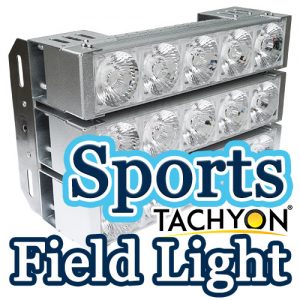 Spotlights is a kind of lamp which is designed to have higher illuminance on the illuminated surface than the surrounding environment. Also called spotlight. Generally, it can aim in any direction and has a structure that is not affected by climatic conditions. It is mainly used in large-area mines, building outlines, stadiums, overpasses, monuments, parks, and flower beds. Therefore, almost all large-area lighting fixtures used outdoors can be regarded as floodlights. The angle of the exiting beam of the flood light is wide and narrow, and the range of variation is between 0 ° and 180 °. Among them, the light beam is particularly narrow and is called a searchlight.Spotlights is composed of optical parts, mechanical parts and electrical parts. The optical components are mainly reflectors and light blocking grids that limit light. The mechanical parts are mainly the housing, as well as the focusing mechanism that fixes and adjusts the position of the light source, the bracket, the base that fixes the lamp, and the parts that adjust the projection direction of the lamp with an angle indicator. For most of the sealed floodlights, the mechanical parts also have protective glass and various sealing rings. According to the needs of the use
Spotlights is a kind of lamp which is designed to have higher illuminance on the illuminated surface than the surrounding environment. Also called spotlight. Generally, it can aim in any direction and has a structure that is not affected by climatic conditions. It is mainly used in large-area mines, building outlines, stadiums, overpasses, monuments, parks, and flower beds. Therefore, almost all large-area lighting fixtures used outdoors can be regarded as floodlights. The angle of the exiting beam of the flood light is wide and narrow, and the range of variation is between 0 ° and 180 °. Among them, the light beam is particularly narrow and is called a searchlight.Spotlights is composed of optical parts, mechanical parts and electrical parts. The optical components are mainly reflectors and light blocking grids that limit light. The mechanical parts are mainly the housing, as well as the focusing mechanism that fixes and adjusts the position of the light source, the bracket, the base that fixes the lamp, and the parts that adjust the projection direction of the lamp with an angle indicator. For most of the sealed floodlights, the mechanical parts also have protective glass and various sealing rings. According to the needs of the use
environment, some also have a metal mesh cover. Good performance floodlights are also equipped with air filters. Floodlights can be installed individually, or multiple lights can be combined to be installed on poles of more than 20m to form a high-pole lighting device. In addition to the features of beautiful appearance, centralized maintenance, reduced light poles and floor space, the biggest advantage of this device is its strong lighting function. When the light is projected from a high place, the ambient spatial brightness is high, and the light coverage is large, giving a day-like feeling, so it has higher lighting quality and visual effects.
Airport lights
 The airport lighting system is an important reference for aircraft landing and taxiing. In recent years, with the advent of LED navigation aids, it is a major improvement in airport lighting technology. With the maturity of technology and the improvement of technology, the price gap between LED lamps and traditional lamps is gradually narrowing, and its advantages in operating stability, light source life, color, uniformity of light emission, and energy saving are obvious. The promotion of airport lamps in the airport has brought convenience. And because of its low failure rate, LED lamps have become the best choice for reducing the workload of maintenance personnel and improving the operational stability of navigational lighting systems.
The airport lighting system is an important reference for aircraft landing and taxiing. In recent years, with the advent of LED navigation aids, it is a major improvement in airport lighting technology. With the maturity of technology and the improvement of technology, the price gap between LED lamps and traditional lamps is gradually narrowing, and its advantages in operating stability, light source life, color, uniformity of light emission, and energy saving are obvious. The promotion of airport lamps in the airport has brought convenience. And because of its low failure rate, LED lamps have become the best choice for reducing the workload of maintenance personnel and improving the operational stability of navigational lighting systems.
New LED display
The new LED display devices have the advantages of low power consumption, high brightness, long life, and small size. This article starts with a brief history of the development of LED display devices, and discusses the surface mount LED, LED in automotive applications and LED for lighting. Development Trends In 1968, the research and development of LEDs achieved breakthrough progress. The use of nitrogen doping technology made the GaAsP device’s efficiency reach 1 lumens / watt, and it can emit red, orange and yellow light. By 1971,  the industry had launched GaP green bare LEDs with the same efficiency. Beginning in 1972, a small number of LED displays were used for clocks and calculators. The world’s first LED-powered watch was originally sold in expensive jewellery stores, and it sold for as much as $ 2,100. By the 1970s, due to the large number of applications of LED devices in home and office equipment, the price of LEDs plummeted. In fact, LED was the main digital and text display technology of that era. However, in many commercial devices, LED display screens are also gradually facing fierce competition from other display technologies, such as liquid crystal, plasma and vacuum fluorescent tube displays.
the industry had launched GaP green bare LEDs with the same efficiency. Beginning in 1972, a small number of LED displays were used for clocks and calculators. The world’s first LED-powered watch was originally sold in expensive jewellery stores, and it sold for as much as $ 2,100. By the 1970s, due to the large number of applications of LED devices in home and office equipment, the price of LEDs plummeted. In fact, LED was the main digital and text display technology of that era. However, in many commercial devices, LED display screens are also gradually facing fierce competition from other display technologies, such as liquid crystal, plasma and vacuum fluorescent tube displays.
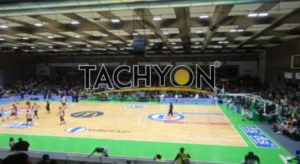
This kind of competition encourages LED manufacturers to further expand their product types and actively seeks out application areas where LEDs have clear competitive advantages. Since then, LEDs have been used in text dot matrix displays, light grids for background patterns, and bar graph arrays. The size and complexity of digital display screens are constantly increasing, ranging from 2-digit to 3-digit or even 4-digit, from 7-segment numbers to 14 or 16-segment arrays capable of displaying complex text and pattern combinations. By 1980, manufacturers began to provide intelligent dot matrix LED displays. This technological advancement enables LEDs to be used in outdoor sports information announcements and in car centrally mounted stop light (CHMSL) devices. The invention of the bright blue LED makes it possible to realize a true color advertising display screen, which can display true color, full motion video images.
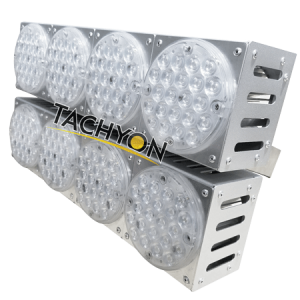 The advent of blue LEDs has enabled people to partially convert higher-energy blue light into other colors using retro-converting phosphorescent materials. Now only the LED light source can completely cover all the saturated colors in the CIE chromaticity curve, and the organic integration of LEDs and phosphors of various colors can produce almost any color without restriction. In terms of reliability, the half-life of the LED (that is, the time during which the light output is reduced to half its original value) is about 10,000 to 100,000 hours. In contrast, the half-life of small indicator incandescent lamps (here, half-life refers to the time that half of the number of lamps fail) typically ranges from 100,000 to thousands of hours, depending on the lamp’s rated operating current.
The advent of blue LEDs has enabled people to partially convert higher-energy blue light into other colors using retro-converting phosphorescent materials. Now only the LED light source can completely cover all the saturated colors in the CIE chromaticity curve, and the organic integration of LEDs and phosphors of various colors can produce almost any color without restriction. In terms of reliability, the half-life of the LED (that is, the time during which the light output is reduced to half its original value) is about 10,000 to 100,000 hours. In contrast, the half-life of small indicator incandescent lamps (here, half-life refers to the time that half of the number of lamps fail) typically ranges from 100,000 to thousands of hours, depending on the lamp’s rated operating current.
How to distinguish between the light guide plate and the diffuser plate of the LED panel light.
(A) different materials:
1.The diffuser substrate is PC;
2.The substrate of the light guide plate is PMMA.
(B) different functions:
1.The main functions of the diffuser plate :
(1) Disperse the light flux and evenly distribute the light (some composite diffusion plates can control the exit angle in addition to making the light uniform).
(2) Support the backlight structure and protect the underlying optical materials from damage.
2.The main role of the light guide plate:
(1) The light flux that guides the LED point light source is evenly distributed throughout the plane, and his key role is to guide the light distribution.
(2) Use the reflection mechanism to use the light flux more efficiently and control the light distribution.
(3) From the appearance:
1.Light guide plate:
The biggest feature of the panel light is the side light, the so-called side light is the light from the side of the lamp into the light guide plate, after refraction, the light from the front of the lamp. Therefore, the light guide plate is also the core device of the panel light. Without it, the panel light cannot emit light on the front side.
2.Diffusion plate:
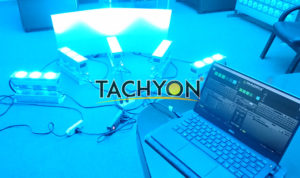 The light coming out of the light guide plate is not very regular, and the panel lights without the diffuser plate are densely packed from the surface. Students with dense phobia must be very injured. At this time, a diffuser is required to evenly diffuse the light. The effect of the diffusion is related to the haze of the material. At the same time, high fog will also affect the light output. This is a contradiction. In addition, the diffusion plate can also protect the light guide plate. The light guide plate is extremely easy to scratch and stick to dust, so the diffusion plate must be covered on the light guide plate.
The light coming out of the light guide plate is not very regular, and the panel lights without the diffuser plate are densely packed from the surface. Students with dense phobia must be very injured. At this time, a diffuser is required to evenly diffuse the light. The effect of the diffusion is related to the haze of the material. At the same time, high fog will also affect the light output. This is a contradiction. In addition, the diffusion plate can also protect the light guide plate. The light guide plate is extremely easy to scratch and stick to dust, so the diffusion plate must be covered on the light guide plate.
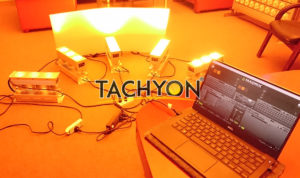 The light guide is made of optical grade acrylic / PC sheet. The optical-grade acrylic sheet is used to absorb the light from the lamp to stay on the surface of the optical-grade acrylic sheet. When the light hits each light guide point, the reflected light will diffuse to various angles, and then the reflection conditions will be destroyed and emitted from the front of the light guide plate. The light guide plate can emit light uniformly through various light guide points of different density and sizes. The purpose of the reflection sheet is to reflect the light exposed from the bottom surface back to the light guide plate to improve the light use efficiency; under the same area light emission brightness, the light emission efficiency is high and the power consumption is low.
The light guide is made of optical grade acrylic / PC sheet. The optical-grade acrylic sheet is used to absorb the light from the lamp to stay on the surface of the optical-grade acrylic sheet. When the light hits each light guide point, the reflected light will diffuse to various angles, and then the reflection conditions will be destroyed and emitted from the front of the light guide plate. The light guide plate can emit light uniformly through various light guide points of different density and sizes. The purpose of the reflection sheet is to reflect the light exposed from the bottom surface back to the light guide plate to improve the light use efficiency; under the same area light emission brightness, the light emission efficiency is high and the power consumption is low.
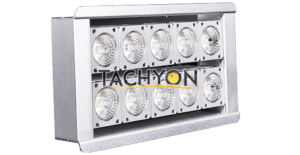 The light diffusion plate is a chemical or physical method that uses the physical phenomenon of refraction, reflection and scattering when light encounters two media with different refractive indices during the course of travel. It is used in PMMA, PC, PS, PP and other substrates. Add inorganic or organic light diffusing agent to the foundation; or artificially adjust the light through the array of micro-featured structures on the surface of the substrate, so that the light can be refracted, reflected, and scattered in different directions, thereby changing the path of light and achieving sufficient incident light Scattering thus produces the effect of optical diffusion. Light diffusion plates are widely used in liquid crystal displays, LED lighting and imaging display systems.
The light diffusion plate is a chemical or physical method that uses the physical phenomenon of refraction, reflection and scattering when light encounters two media with different refractive indices during the course of travel. It is used in PMMA, PC, PS, PP and other substrates. Add inorganic or organic light diffusing agent to the foundation; or artificially adjust the light through the array of micro-featured structures on the surface of the substrate, so that the light can be refracted, reflected, and scattered in different directions, thereby changing the path of light and achieving sufficient incident light Scattering thus produces the effect of optical diffusion. Light diffusion plates are widely used in liquid crystal displays, LED lighting and imaging display systems.
1.Different characteristics
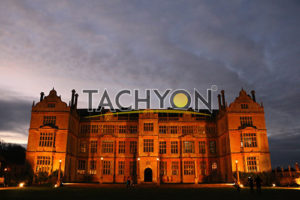 The biggest feature of the diffuser plate is that it causes a lot of interference with light, no matter how much the light distribution curve of the original design is, as long as the light passes through the diffuser plate, it will make the beam angle become 160 ~ 176 °, so from the side, There is a layer of fog on the surface.
The biggest feature of the diffuser plate is that it causes a lot of interference with light, no matter how much the light distribution curve of the original design is, as long as the light passes through the diffuser plate, it will make the beam angle become 160 ~ 176 °, so from the side, There is a layer of fog on the surface.
The light guide plate uses optical grade acrylic / PC board, and then uses high-tech materials with high reflectivity and no light absorption. Laser engraving, V-shaped cross grid engraving, and UV screen printing technology are used on the bottom of the optical grade acrylic board. Print light guide dots.
2.Works differently

The light guide plate uses the optical grade acrylic sheet to absorb the light from the lamp to stay on the surface of the optical grade acrylic sheet. When the light hits each light guide point, the reflected light will diffuse to various angles, and then the reflection conditions will be destroyed. . The light guide plate can emit light uniformly through various light guide points of different density and sizes.
The larger the beam angle of the diffuser plate is, the lower the illuminance is, and some filters will be generated, so that some of the wavelengths cannot be penetrated, resulting in color deviation. For example, if the surface is subjected to light interference treatment again (for example: frosted, pressed), The luminous rate is even lower due to the natural phenomenon of geometric optics, so the substrate used to make the diffuser should be selected with a lower refractive index, and the interference with light will be lower.
3. apply differently
 The light guide plate has a high light conversion rate (more than 30% higher than traditional boards), uniform light, long life and can be used normally for more than 8 years indoors. It is safe, environmentally friendly, durable and reliable. It can be used indoors and outdoors.
The light guide plate has a high light conversion rate (more than 30% higher than traditional boards), uniform light, long life and can be used normally for more than 8 years indoors. It is safe, environmentally friendly, durable and reliable. It can be used indoors and outdoors.
The diffuser plate is used in the direct type backlight system used in LCD TVs. The diffuser plate has good properties such as heat resistance, dimensional stability, mechanical strength, and flame resistance, and has high light transmittance, excellent shielding and durability. , So that its light diffusion effect reaches the best state, which is most suitable for direct type backlight units.
What is the difference between a condensing LED and an astigmatic LED?
Condensing LED
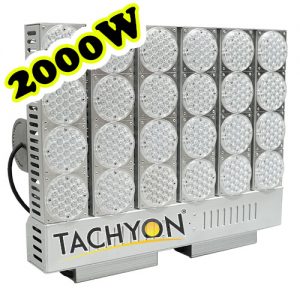
Condensing LED has a very high luminous intensity value, because its light is aggregated by itself, so its light emitting angle is generally small, the light irradiation range is small, and the light it emits is like the light beam from a flashlight. The brightness of the light spot is high, but the periphery of the light spot is not too high. Condensing LEDs are most suitable for occasions that require high brightness but have a small range of illumination, such as making spotlights, downlights, table lamps, flashlights, etc. Astigmatic LEDs are more suitable for room lighting and those that require soft and uniform light. occasion.
Astigmatic LED
The astigmatism type LED has a low luminous intensity value, and its light emitting angle is large, which can reach more than 120 degrees. Therefore, its light range is large, and the light emitted is uniform, just like the light emitted by ordinary lighting lamps.
LED light angle
The size of the LED light emission angle mainly depends on the packaging process, including whether the scatterer is added to the bracket, die head, or epoxy resin. In order to obtain a highly directional angular distribution, that is, to obtain a smaller light emitting angle, this requires: ① the position of the LED die is farther from the die head; ② use a conical (bullet) die head; ③ packaged Do not add diffusing agent to epoxy resin.


